15-1 Wrap-up
A – Domain Highlights
Now, you will review what you learned in this course and how to apply that to your teaching practice. Begin reflecting on all areas of child development addressed in this course.
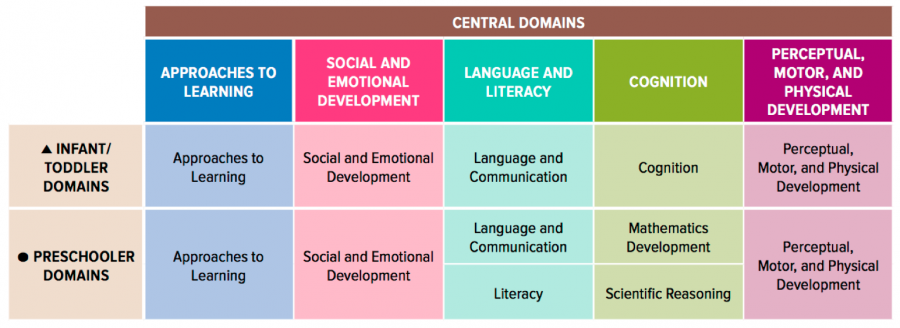
What impacted you the most about each area of development? What did you learn about each domain of development? What were your significant “take-aways”, highlight, or new knowledge learned about each domain?
Here is an example:
Domain: Social and emotional development for children birth to age 3.
One highlight is: realizing that possessive statements like “It’s mine!” can be a way for children to express their developing self-identity.
Highlights in Practice
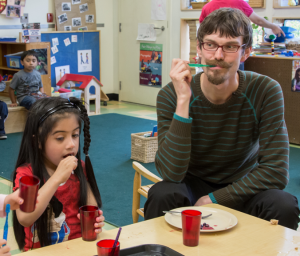
Now that you’ve thought about the new knowledge you’ve gained about each domain of development and topic area discussed in this course, consider how your teaching practice will change as a result of your learning: How will this course impact your interactions with children? What new experiences will you provide for the children in your care? What will you do differently to support each area/domain of development?
Consider how you could use some surprising ideas in your teaching practice.
An example practice is:
When hearing a child make possessive statements, try to encourage their developing self-identity while guiding them toward more positive behavior by saying, “Yes, that is yours right now, but in 5 minutes will you give someone else a turn?”
B – Connections to Other Areas
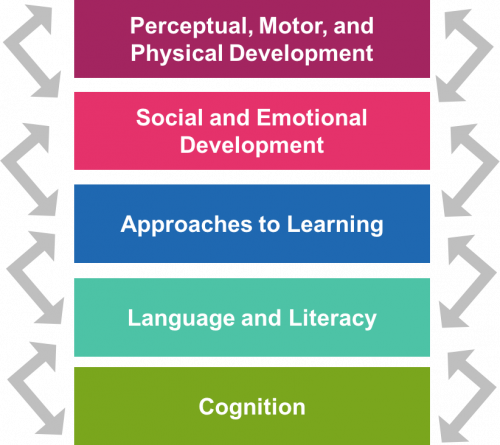
Development does not occur in a vacuum. Development in one area connects in many ways to development in other areas.
Describe two ways in which development in one area or domain connects to other areas of development that we’ve covered. This connection can include connections to non-framework areas, such as trauma and resilience.
An example of connections to other areas is:
Children’s social and emotional development can be adversely affected by the experience of a traumatic event or toxic stress. Children may act more aggressively to protect themselves or may not trust adults, which will prevent them from forming positive attachments to adult caregivers. However, supporting social and emotional development can help to buffer the adverse effects of such experiences. (Connection to trauma and resilience)
Connections to Other Ages
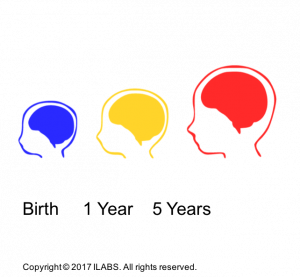
Having considered connections between your area and other areas of development, now think about how children’s development in your topic area varies throughout childhood. Think about the differences or similarities between children of different ages in your topic area.
Choose one domain of development in the HSELOF. Think about similarities and/or differences in children’s development at different ages in your topic area. The similarities/differences can address characteristics of development or ways that adult support development. You can review information in the lessons and/or consult the HSELOF as a resource if needed.
Think about five similarities or differences in children’s development at different ages in your topic area.
Examples of connections to other ages are:
- Younger children are doing most of their social engagement with adults, while older children are beginning to engage with other children as well (difference).
- Both younger and older children benefit from responsive and consistent social and emotional engagement with adults (similarity).
C – Questions
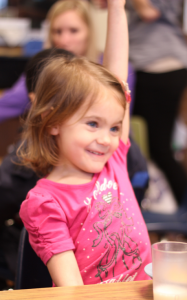
As early childhood educators, we never stop learning about child development. Having questions about child development can drive our continued professional growth. Having questions is also a sign of in-depth thinking and ongoing reflection about a topic.
We’ve learned a lot in this course, but we’ve not covered every topic or answered every possible question. Think about two questions that you still have about child development. Then for each question, consider at least one resource you could check to start finding the answer.
EarlyEdU Alliance (Publisher). (2018). 15-1 Wrap-up. In Child Development: Brain Building Course Book. University of Washington. [UW Pressbooks]

